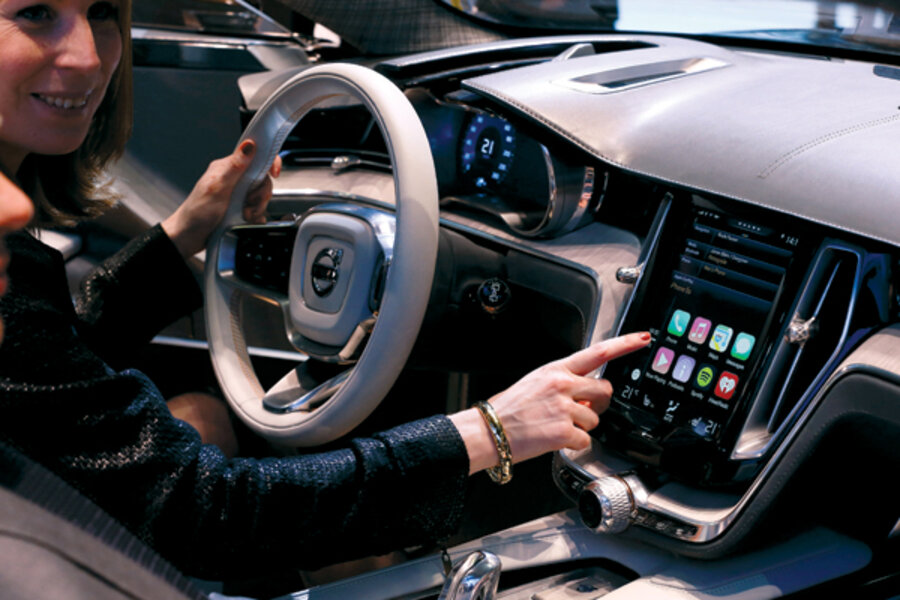Apple seizes the steering wheel with CarPlay
Loading...
Apple and Android are battling for control of your phone, your tablet, and now your car.
Last month, Apple rolled out CarPlay, a way to make calls, send and receive messages, and get directions from your vehicle, while minimizing distractions. Rather than have drivers sneak a peek at their phones, the system uses voice commands and a screen built into the dashboard. Google has laid the groundwork for a similar in-car program, which it hopes to deploy soon.
Both plans – and the myriad schemes from carmakers themselves – implicitly accept that drivers want to stay connected even when they probably shouldn't be. Two-thirds of Americans say they use their mobile phones while behind the wheel, according to the AAA Foundation for Traffic Safety in Washington. One in 4 drivers admits to sending texts or e-mails, even though nearly everyone (96 percent) agrees that doing so is a serious safety threat.
These new phone-to-car connections aim to at least make the process less distracting, but car shoppers should think twice before buying a vehicle with these new features. Car manufacturers still need to iron out some issues.
To get CarPlay up and running, you'll need two things: an iPhone 5 or newer model and a vehicle with the necessary hardware. By the end of the year, Apple's system will work with specific vehicles from Ferrari, Mercedes-Benz, and Volvo, with 13 additional manufacturers promising CarPlay integration down the road.
CarPlay vehicles have a digital dashboard, which is essentially just a computer monitor for your phone. This car-mounted screen draws all its information and Internet connection from the phone. If you forget your iPhone at home, the vehicle will still function normally, but none of the CarPlay features will work.
This configuration is a smart move. The average vehicle on American roads lasts 11.4 years, according to market research firm Polk in Southfield, Mich. Meanwhile, most smart phones turn over every other year. If automakers had tried to build smart phone components into their cars, the vehicles likely would have been obsolete before they even left the lots. By relying on the phones themselves, Apple can update the software without updating the cars.
Drivers must plug their iPhones into the cars using Apple's Lightning connector, the smaller-sized plug that replaced Apple's classic 30-pin connector in 2012. People using CarPlay better hope that if Apple changes the plug size again, the new standard will be compatible with their car – and that they will want to own an iPhone for as long as they own the car. (Remember: The original iPhone debuted only seven years ago.)
For more on how technology intersects daily life, follow Chris on Twitter @venturenaut.







